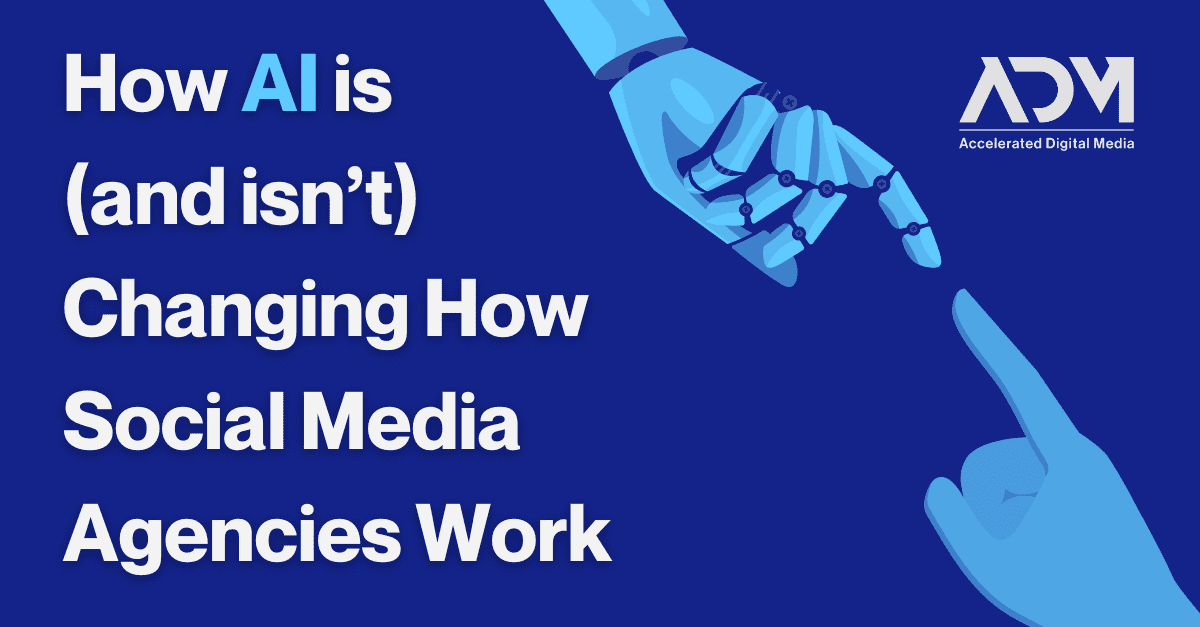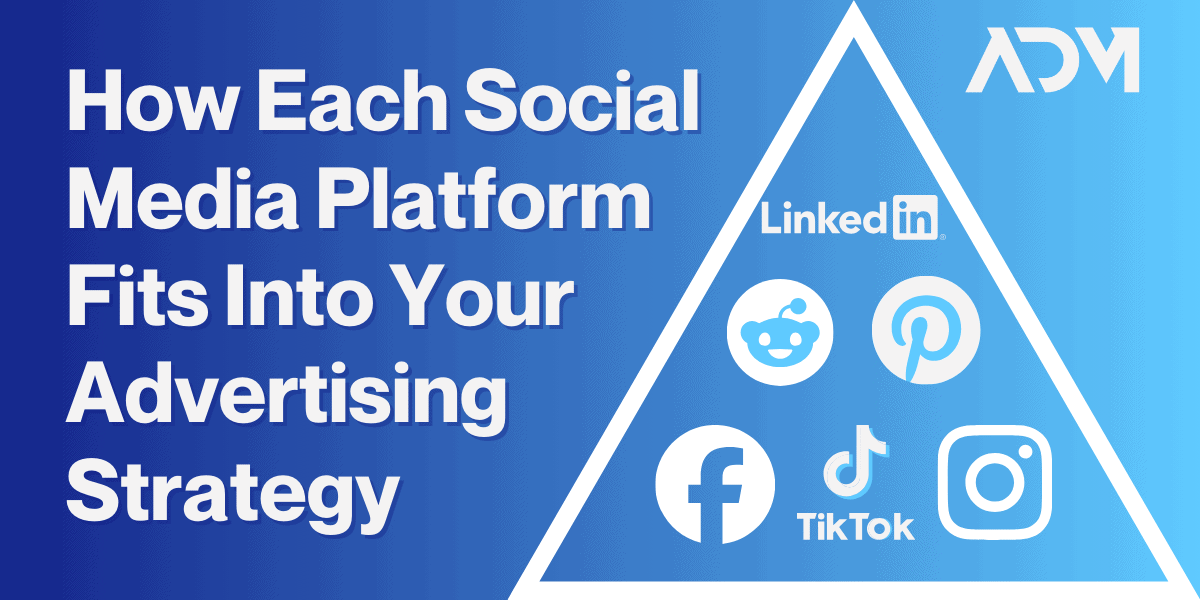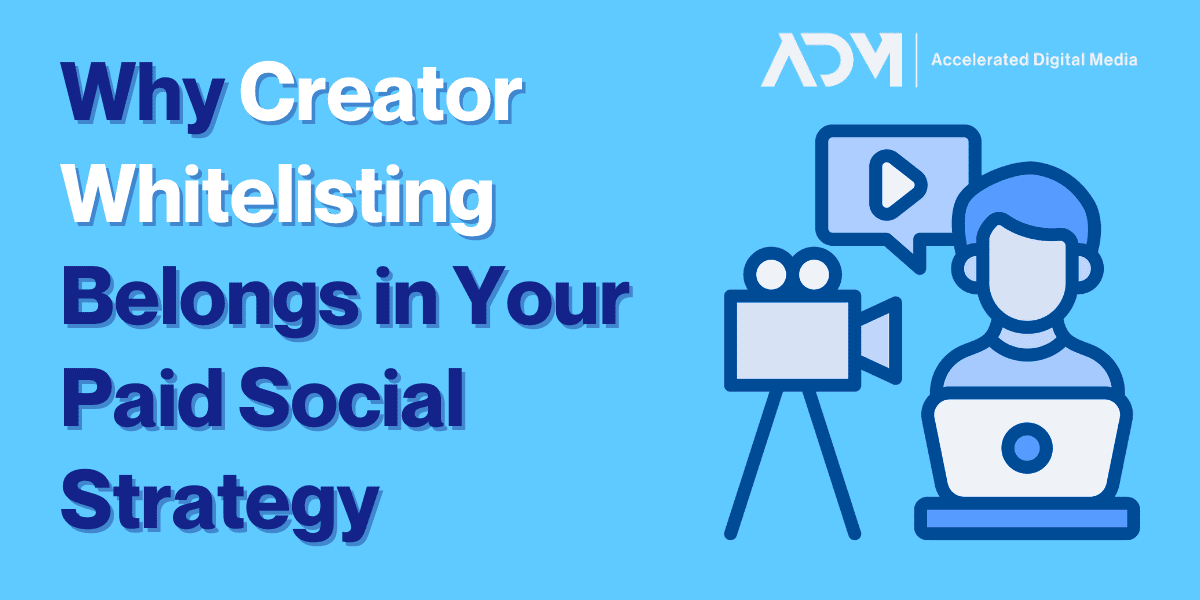Like it, love it, fear it, or otherwise, AI is here to stay. The algorithms have become increasingly powerful—and increasingly essential for marketers trying to grow business through paid social marketing.
Humanoid robots aren’t sitting in front of laptops tweaking Meta Ads budgets. But in recent years, most platform-side tools have leaned more heavily into machine learning and automation. If desired, advertisers today can let the platform determine targeting or even compile dynamic creative all on its own. There are also third-party tools that help with creative production in particular, like AI image or copy generators.
While some of these tools have been quite beneficial, they should obviously be assessed with a critical eye. We’ve found that not all tools are created equal, and all should be vetted by real humans before being implemented for use in any campaign. But what’s clear is that the AI revolution in marketing is just getting started. In this blog, we’ll outline the main areas where it’s already affecting change for paid social agencies and give our take on how well those new functions perform against human touch.
AI’s Big Advantage: Paid Social Targeting
The first place that social marketers have seen a major impact from AI has been in targeting. Meta’s Advantage+ is the blueprint. Where previously, brands relied on manual targeting options like lookalike audiences or interest/behavioral targeting, it’s now more common to leave targets broad and let machine learning do the work to match the right creative with the right user. One of the tools related to this is Meta’s “Advantage+ Audience,” which gives the platform permission to deliver ads outside of the target audience if AI deems it will improve performance.
Other platforms have also provided their own answers to Advantage+. The clearest example of this is TikTok’s Smart Performance Campaign, which is described similarly: “Smart Performance Campaign is a new end-to-end automation campaign solution to maximize your delivery outcomes with less manual input required from your side. Our system produces multiple creatives and bids for auctions leading to stronger performance for your campaigns.”
Most platforms offer an audience expansion tool or toggle like “Advantage+ Audience” and we find this can be beneficial if the client doesn’t have very strict targeting parameters.
Overall, most platforms are beginning to move in the direction of offering more automated, streamlined campaign setup options. We’ve found these tools to be effective and beneficial—to the point that one of our clients described improved performance under Advantage+ as “like Facebook in the old days”—back before iOS updates changed the playing field.
AI Can Assist Marketers and Even Influence Decisions
The algorithms also can work as a productivity boost or fail safe for marketers, though while they’re useful assistants, they’re not ready to take the lead on account management.
For instance, AI has made marketers more reliant on automated rules to make changes in campaigns or proactively flag issues. At ADM, we typically put a rule in place in most Meta Ads accounts to flag if a campaign has spent $0 on a given day—this helps us to immediately address errors or performance issues. We also have other similar, more goal-specific rules in place that help us get ahead of things in a way we might not be able to do more manually. Such automated marketing alerts and observations have become pretty standard in digital marketing.
But, at least for paid social, machine learning also has a way to go before it can match a media buyer’s input on budgeting and bidding. Most automated bidding tools lack the nuance necessary to appropriately spend and maximize returns. For example, if you are running a purchase-based campaign and tell Meta that you want it to maximize return on ad spend (ROAS), it can do that—but sometimes at the expense of order volume. Obviously, that’s not ideal for a client who may need a certain number of orders each month to meet their goals.
Right now, in-platform automation can’t consider and balance a business’s nuanced goals against each other in the same way that a human does.
AI is Getting Into Marketing Creative—But Is it Creative Enough?
If you’re removing some human control from the targeting process, which AI enables you to do, you need to make sure your creative is strong. We still feel that there is no substitute for human input when it comes to social media creative, but that doesn’t mean AI isn’t making inroads on how it’s developed.
Meta offers a number of dynamic creative tools for advertisers to take advantage of. This can include submitting different human-generated images and copy variations to Meta but letting AI decide which to run and how to pair them. Features like Dynamic Product Ads (DPAs) show a customized collection of catalog products to each individual user. These capabilities enable better testing. At ADM, we sometimes utilize Meta’s dynamic copy feature to test multiple copy or headline variations at once.
There are also platform-based and third party tools that can be used to generate creative, but they’re not where they need to be just yet. For instance, language tools like ChatGPT can be a good idea-starter for generating new ad copy, but we’d recommend against using them to write your material verbatim. In-platform, Meta also offers AI-generated copy and headline suggestions even within normal ad setups—with the same mixed results.
There are also many tools like AI image generators that can create images from scratch, which may be a good option for those without access to creative tools or minds. Of course, the quality of its output can’t exactly match what comes from a human, so balance is necessary. TikTok has rolled out an entire suite of AI creative tools, but marketers haven’t exactly fallen in love with the ads they produce.
At the end of the day, we believe that AI will never fully be able to take over the creative piece. All top-performing creative has a human element: it speaks to users in ways that resonate. So far, even the best AI-generated copy or creative concepts—at least that we’ve seen—have yet to match those written or ideated by a human.
Staying Mindful of the AI Marketing Curve
Regardless of anyone’s personal opinion on AI tools, the reality is that social platforms—with their access to so much personal interest data—know user behavior far more intimately than advertisers do. Possibly more intimately than they’d like us to know. Algorithms are more advanced than ever and are continuously improving their ability to show the right content to the right user.
People joke all the time about how they thought about something, but never said it out loud or searched it, and yet two days later an ad for that thing will appear on their social timeline. TikTok in particular, which continues to grow explosively, is well-known for its ability to deliver hyper-specific content to its users via its aptly named “For You” feed. And perhaps many (or even most) of us have just accepted this as a reality of living in our current world.
It will be interesting to see where (or if) humans draw the line, and how that impacts the growth of these tools. AI is only as smart as the data it receives, and humans could cut off the supply if they wanted. States are already beginning to pass new restrictions on personal data collection and usage, and further legislation or technological changes could alter the outlook dramatically.
There’s no question these AI tools can help marketers save time and make informed decisions. There’s a reason why Meta advertisers leaned so hard into Advantage+ in 2023—it works! And at face value, it often appears simpler to set up and optimize, so it can feel like there is no downside. But these are nuanced tools, and they still often require the expertise of a good paid social agency to implement and optimize them—particularly as the algorithms continue to disrupt established practices all across digital marketing.




